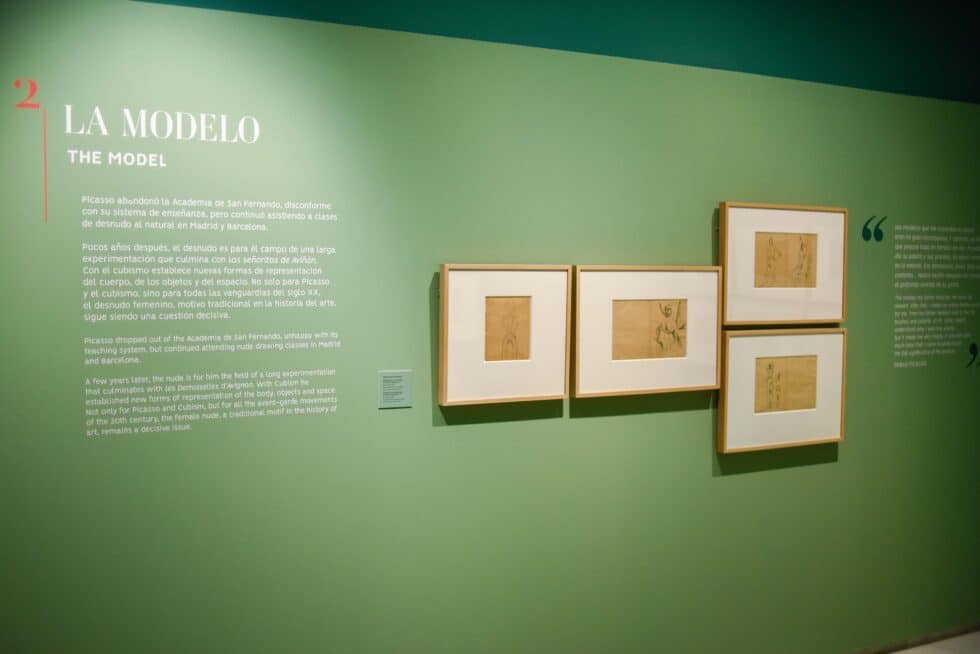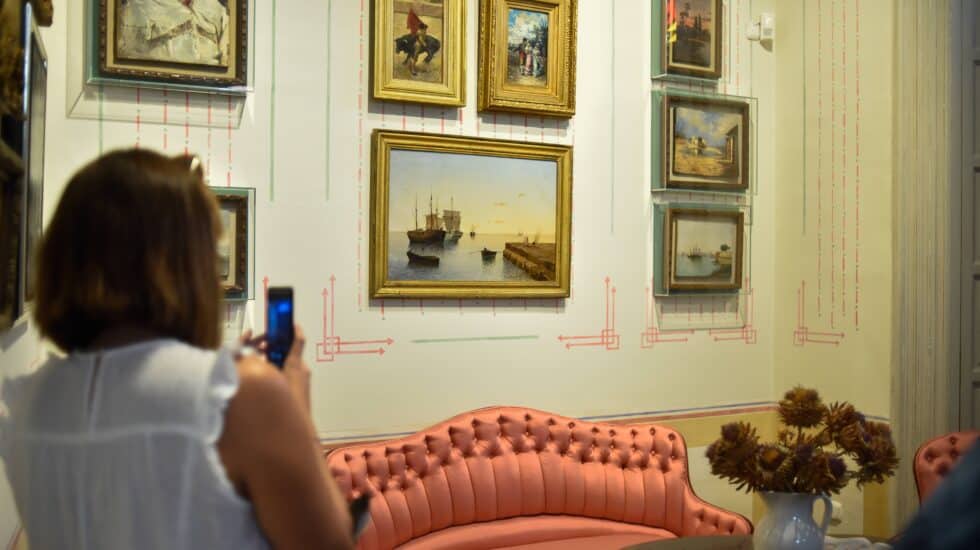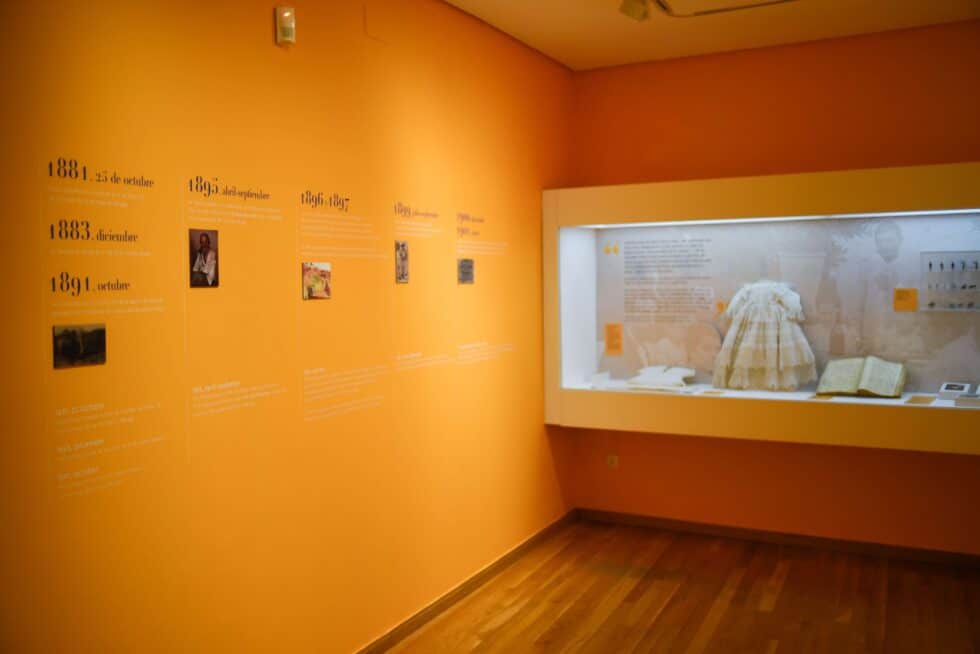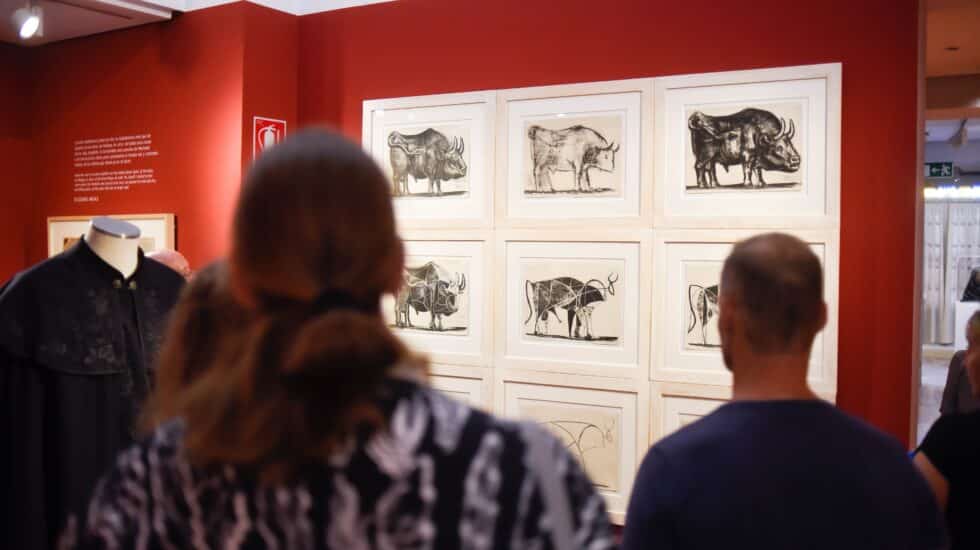
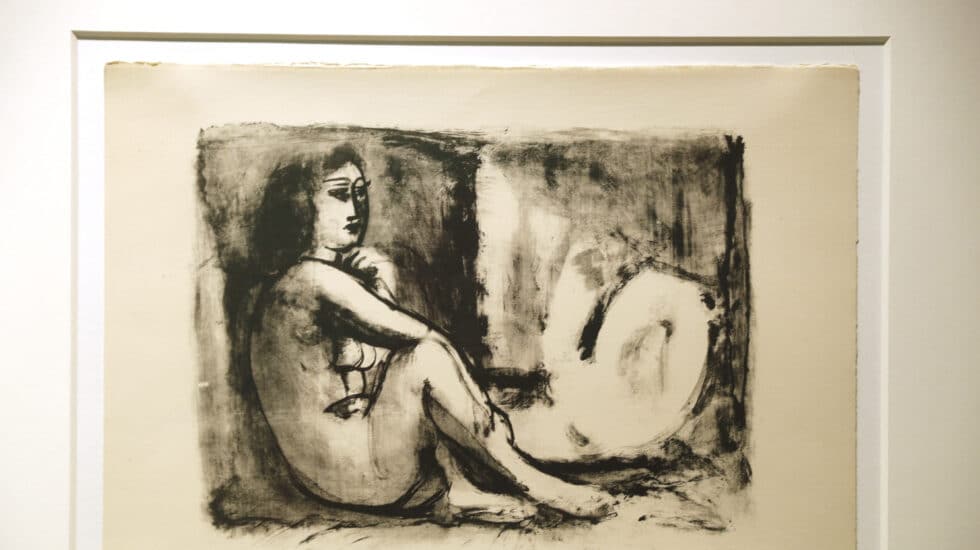
“Two Naked Women” by the Malaga artist Pablo Ruiz Picasso, exhibited at the Museo Casa Natal Picasso in Malaga.
From his first mention of a copy of the Spanish cloak with which he was buried. Picasso Birthplace Museum opens another window to the origins of the Malaga genius with a rearrangement that adds 100 works by the artist, up to 205 original objects, adding works by the author and other creators. Childhood in the studio under the guidance of his father, José Ruiz Blasco, professor of drawing at the School of Fine Arts in Malaga, and in constant contact with the artists, his connection with the Mediterranean and, ultimately, the importance of Malaga. in the personality and work of the artist, aspects that Casa Natal brings to the fore.
According to José María Luna, director of the Public Agency for Picasso’s Birthplace and Other Museum and Cultural Sites, this is the most important intervention since the building opened in 1998. The new route brings together the stimuli and conditions that both the artist Picasso and his personality created. From room 1 on the ground floor with Pablo, who grew up in the workshop where original works by Denis Belgrano, Emilio Ocon and Joarquín Martínez de la Vega, the latter identified by Picasso as “the artist’s godfather”, are presented, in rooms 2 and 3, Model and Artist and Modelin total immersion in the universe of Pablo Picasso through the relationship with the model and the naked woman thanks to the exhibition of original drawings, such as the drawing in album no. 7 for Ladies of Avignonthe only one in Spain out of 16, which the artist devoted to preparatory sketches for the famous painting.
“This is the story of how I was born to a white father and a glass of Andalusian brandy.” With this passage from one of Picasso’s first poems, rooms 4, 5 and 6 are opened, referring to his family environment. The first of these features children’s gothographs, family items, or portraits that the 14-year-old Picasso made with his parents. In addition to this type of everyday items, Lifestyle (Room 5) places the visitor in the main hall of the house with balconies overlooking the Plaza de la Merced. Ruiz Picasso’s living room is adorned with 19th-century pieces, a bust of Our Lady of Sorrows that has always been part of the house, and a collection of oil paintings that were mostly family-owned.
The signature “Picasso de Málaga”, reproduced on a large scale, gives the name to the sixth room and confirms the artist’s feeling for his hometown. Through an illustrated chronology, the various stays in Malaga are explained, from his birth to his last days in 1901. Clothes and other personal items from his childhood have been preserved, such as a baby shirt, his navel belt or one of the shoes from who learned to walk.
To approach Picasso is to approach the pigeons and the Mediterranean. Doves have been a constant theme in the work of the Malaga artist, with which he has reached a universal dimension, becoming a symbol of peace. Writer Louis Aragon chose a lithograph of a white dove for a poster for the Paris Peace Congress in 1949, and the image was a huge success, which the artist greeted with enthusiasm, multiplying his options in later years. Similarly, the Mediterranean is Malaga’s window to the world that influenced Picasso so much, as evidenced by the engravings and paintings.
One of the elements that Picasso owes to his father is his love of bullfighting. The dazzle that produced him can be seen in his first bullfighting works as a child, such as the small oil-on-wood painting The Yellow Picador (1889-1890).
His passion for this show is reflected in the huge production populated by bulls and horses, picadors and bullfighters. Sometimes he treated the subject as an aesthetic delight, but in others he shows a life-and-death struggle “that reveals inner tears, a primordial opposition that reaches Guernica.” The ninth room exhibits ceramics and engravings on the theme of bullfighting, the series is especially noteworthy. Bulla milestone in Picasso’s lithographic production “in which we observe the absolute purification of the animal figure”.
Portrait of a man from Malaga, signed by Juan Dienes, whose collection of photographs of the artist is part of the museum’s collection, and two quotes by Rafael Alberti and Mercedes Guillen say goodbye to Casa Natal Picasso. Alberti maintained a close friendship with Picasso in the 1960s; Guillen, an intellectual in exile, found the artist’s patronage in the harsh Paris of 1939 and always counted on his friendship. “His words express the artist’s sense of unity with his native Malaga, which the Museum wants to convey with renewed vigor in this new exhibition montage,” they added.
Source: El Independiente
